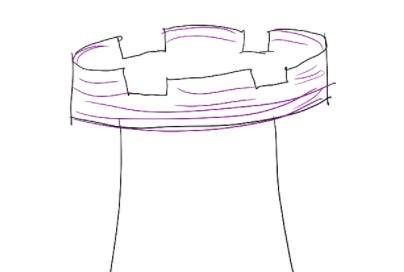“What I really want is to work on…is strategy,” I’ve heard from colleagues on every team I’ve been on. And it’s no surprise — big strategy projects can sometimes seem like the most exciting and high-profile projects in a tech company. They call to mind visionaries who change the world by thinking about big-picture problems
But if they’re not set up well from the beginning, some of these grand strategies end up being underutilized — or, worse, a waste of time.
Why? Because creating a strategy doesn’t directly change anything for our customers. Customers don’t care about our strategies — they care about their experience with the product in their hands. So for a strategy to be useful, it actually has to change our behavior as a team to create better customer outcomes.
That means that to be effective, a strategy should help every person on the team make better decisions day-to-day. It should remind everyone of:
What we believe changes about the world in the future, so everyone understands why our vision needs to change to match it
Our overall goals and direction for the future, so everyone can independently make decisions that fit into that future
How each team fits into what we’re building overall, so every person feels ownership and accountability for their piece
What this team isn’t focusing on, so people can deprioritize things
Why we’re building what we’re building, so everyone is connected to the excitement and motivation of building a great product for our customers.
To make sure we’re ready to build a complete strategy, I’ve found it’s helpful to set up the strategy deliverable by asking specific questions up front, like:
How can we build enough conviction in this strategy that we’re willing to ask our team to act differently because of it?
How can we be specific enough about what we do and don’t need to do, so anyone on the team will know how to change their day-to-day behavior to match the strategy?
What has changed that requires a new strategy now? If the answer is “not much”, would our customers be better served if we did a shorter refresh of our existing strategy and focused more of our resources on execution?
A strong strategy is of course a key foundation for everything we’re building as a company. Without a good strategy, it’s hard for any business to be successful or for teams to understand what direction we’re heading in. And constructing a strategy together is a great way for teams to connect and create excitement about the future we’re all working toward.
But I’ve found the keystone of a strategy’s success is making sure that it translates into day-to-day execution guidance that everyone on the team can take with them — because that’s what turns into better products for our customers.





The 5 points above resonates with me. One of the things that I have picked up and found helpful for a strategy doc is to have an Intent summary at the top - from friends in the military, I have heard it called the commander's intent. The idea is that when on a mission, even if the best-laid plans go up in smoke, this understanding of the intent helps the team make the right tactical choices given the reality of the situation. Only if everyone truly understands the commander's intent are they able to make the right decisions in crunch situations. Similarly, if you can't honestly explain the intent of the new strategy to your team, your customers might not experience the new strategy as intended across all touch points.
So well timed for me working on my own company's strategy! Thank you for your pragmatic wisdom and structure, Ami.